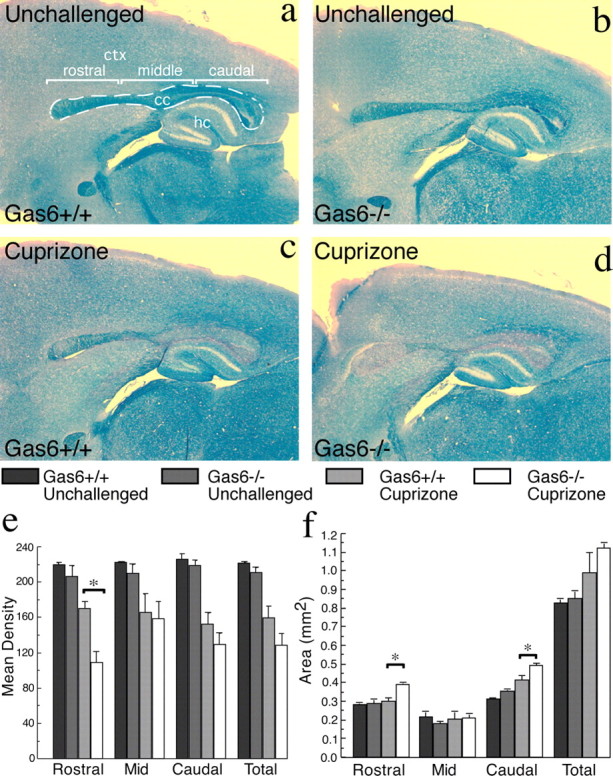Figure 6.

Gas6−/− mice have decreased myelination and increased callosal area in response to cuprizone challenge. a–d, Wild-type and Gas6−/− mice were challenged with cuprizone for 3 weeks with age-matched unchallenged mice included as controls (n = 2, 3 mice per group). Sagittal sections were assessed using LFB staining with image analysis as described in Materials and Methods. e, A statistically significant decrease in LFB mean density was seen in the rostral segment of Gas6−/− animals challenged with cuprizone compared with similarly treated wild-type mice (*p < 0.05). f, The rostral segment also showed a statistically significant increase in area in Gas6−/− challenged with cuprizone (*p < 0.05). Additionally, there was a significant increase in area of the caudal segment of the corpus callosum in Gas6−/− mice (*p < 0.05). Scale bar, 100 μm. The dotted line indicates the boundaries of the corpus callosum (cc). ctx, Cortex; hc, hippocampus.
